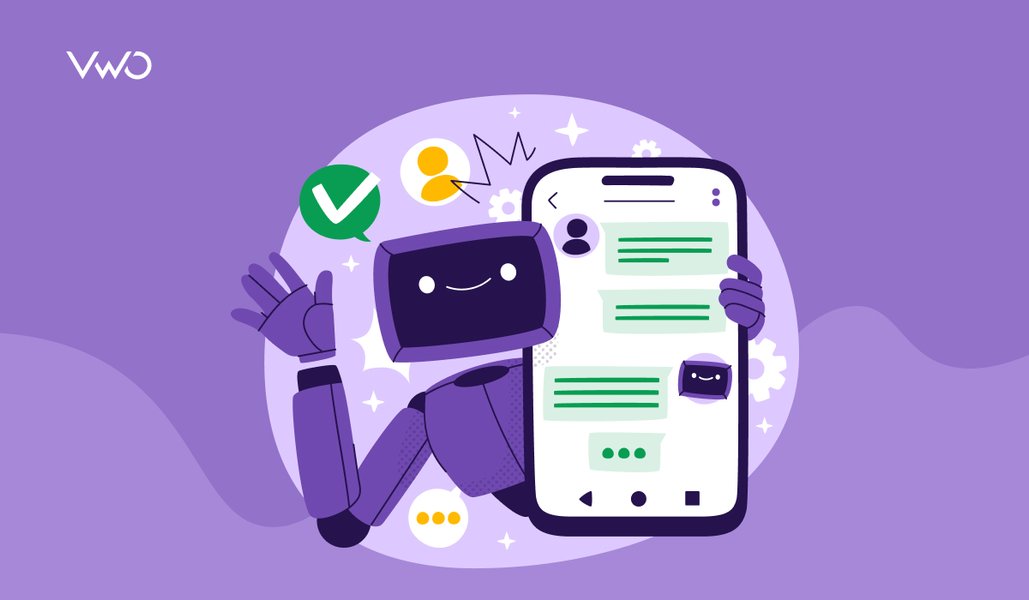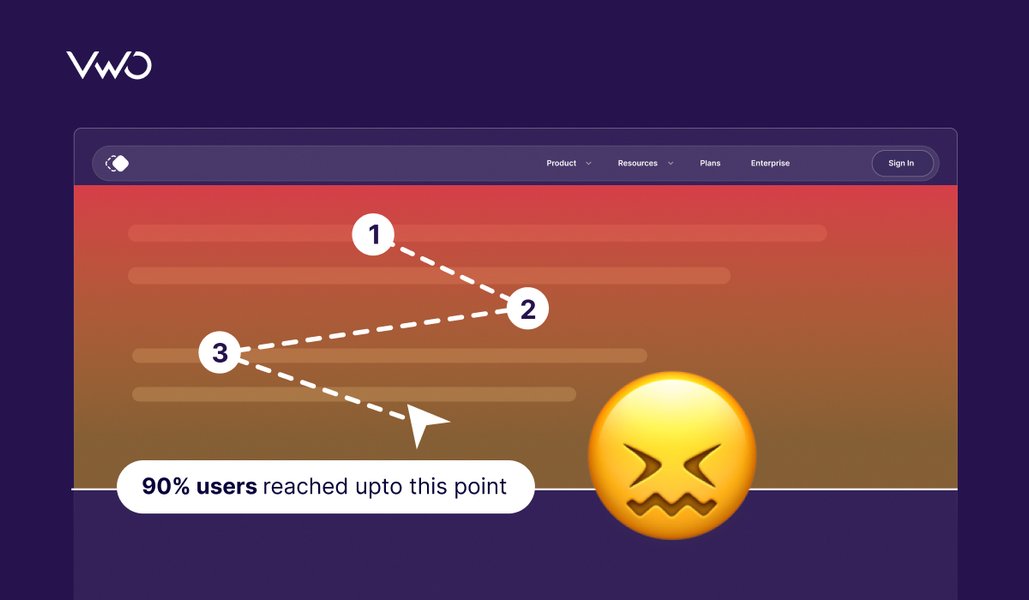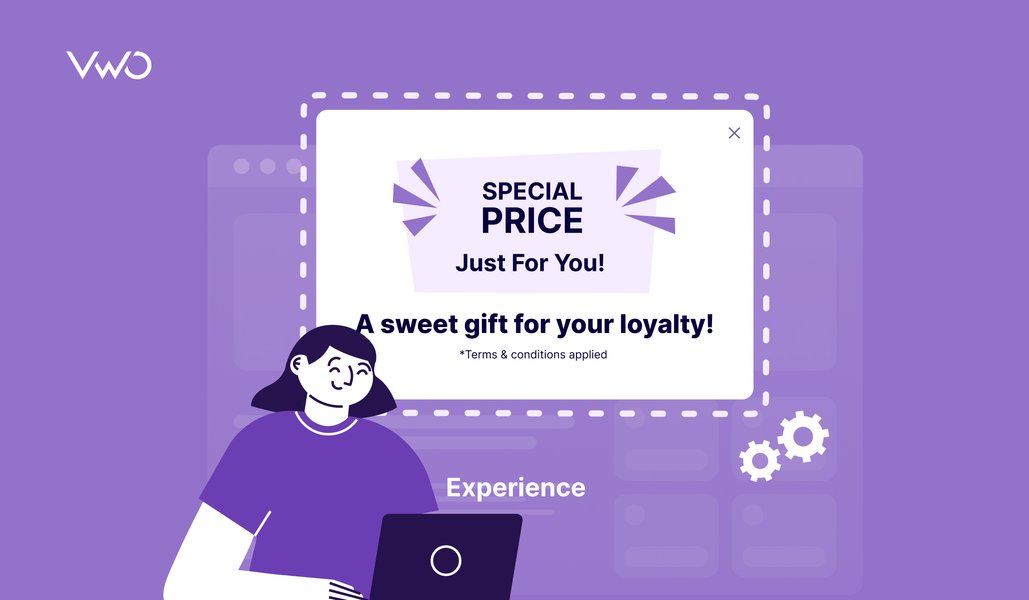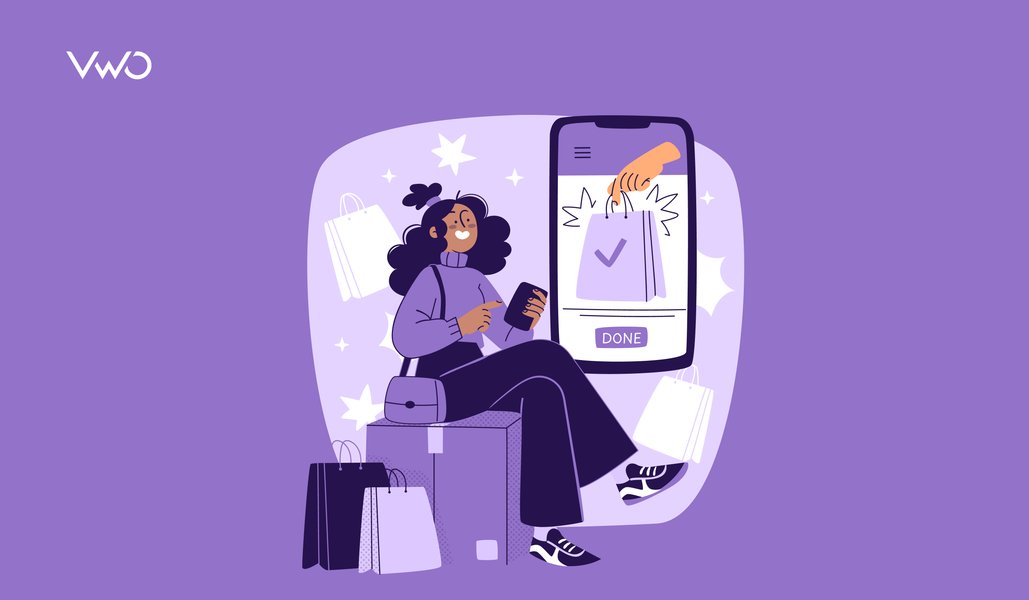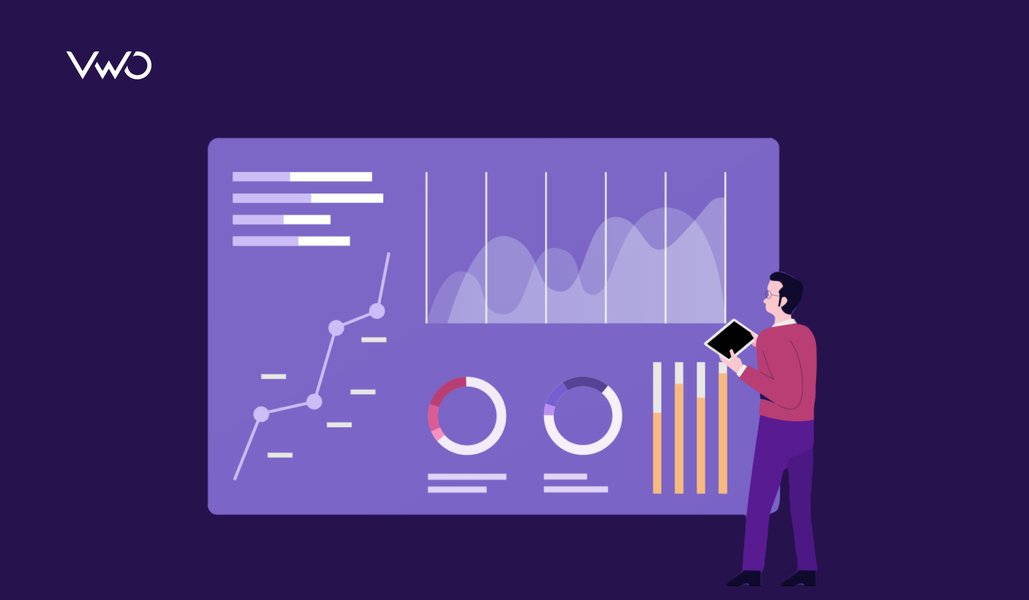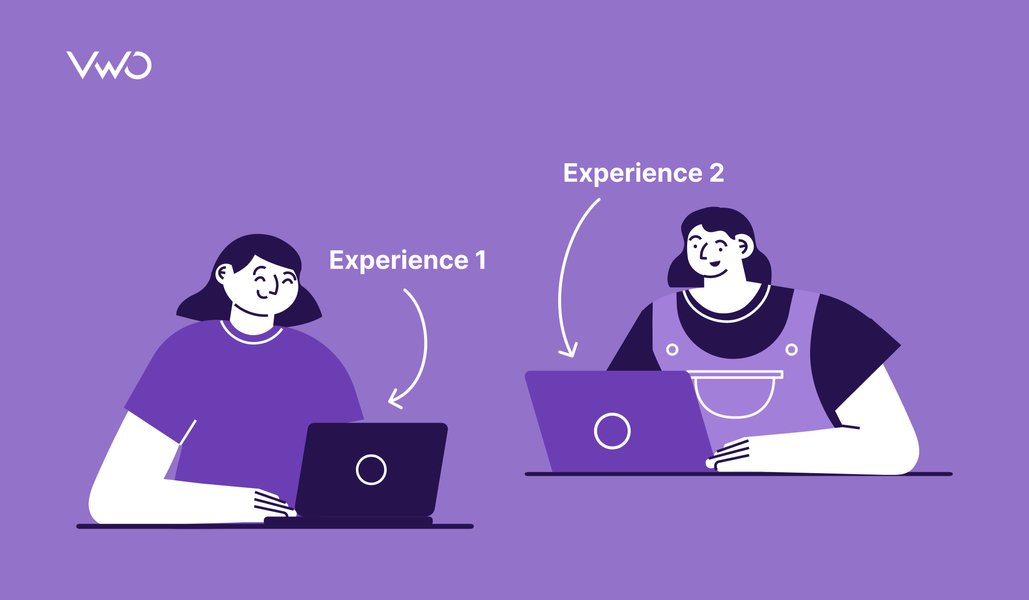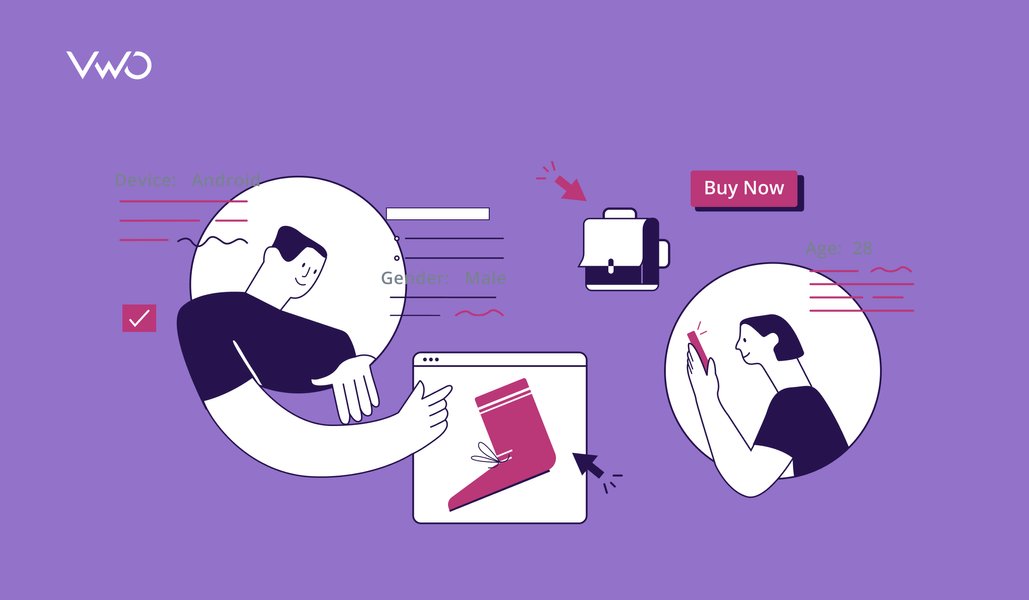Consumers expect companies to deliver personalized interactions – 71% of consumers, to be precise. And fast-growing companies drive 40% higher revenue from personalization. Yet, many businesses struggle to utilize data to fully understand their visitors’ evolving, non-linear journeys. They fail to deliver experiences that match visitor expectations and struggle with low conversions that lead to a loss in revenue, average order value(AOV), purchases, etc.
Have you also spent hundreds of hours gathering and analyzing website data to build experiences that show no change in conversions?
If this is your story, I’ve got two good news for you.
First, you’ve arrived at the right place. And second, you’re not alone!
The case of missing uplift in conversion and revenue
Take the case of an online phone accessories retailer who recently launched a new line of customizable, superior quality phone covers. Despite offering the best products, they were not even close to meeting their conversion goals.
The team decided to find out what was going wrong by tracking visitor behavior. Heatmaps and session recordings showed how visitors interacted with their new offering. After studying the data, some key findings surfaced:
- Visitors dropped off on the customize phone covers page
- Visitors who dropped off spent the most time on the phone specification & personal details pages
Looking at this data, the team narrowed down actionable insights –
- Reduced the number of steps on the customize phone covers page
- Make phone specifications more visual
- Reduced form fields on personal details pages
While this worked, it did not get the expected uplift in conversion, and the team struggled to find reasons and fixes.
Does this sound familiar to you?
While chasing data to fix isolated friction points in the funnel streamlines the buying journey, it does not make the journey contextual or relevant to user segments. Visitors expect relevant experiences and want to feel valued at every touchpoint.
A delightful experience is a mix of experience optimization and engaging with your audience at the right touchpoints. Personalization aids in achieving the latter by helping you release sharp audience-specific contextual and personalized interactions based on user journeys. For instance, rather than simply reducing form fields to reduce drop-offs, the phone accessories retailer can leverage personalization to auto-filter and show customization options relevant to the visitor based on the device they’re using or auto-fill details for repeat customers, and so on.
Similarly, if a visitor on your website is from the US while another is from Germany, the German visitor might expect a local language experience on your website. Or, users who have an affinity for luxury brands are likely to be put off if the most relevant results show discounted brands on the product listing page.
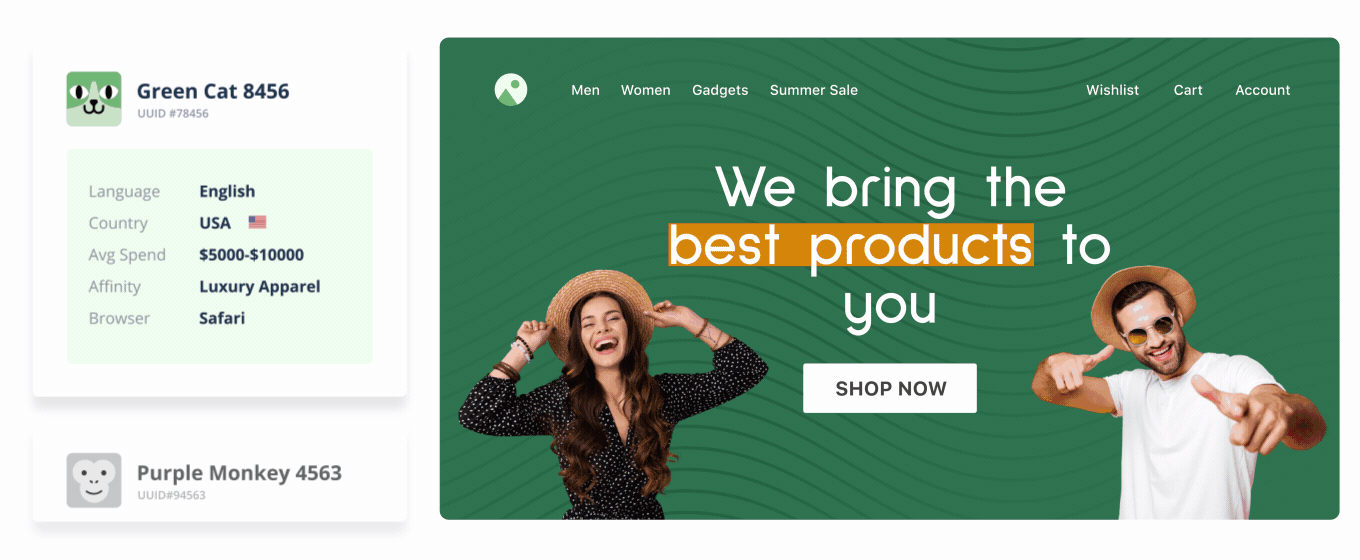
Besides this, visitors also need contextual information relevant to their journey to make a buying decision quickly. Personalization enables this. For example, you can nudge someone visiting a product page forward by showing positive product reviews as a notification triggered at the right time.
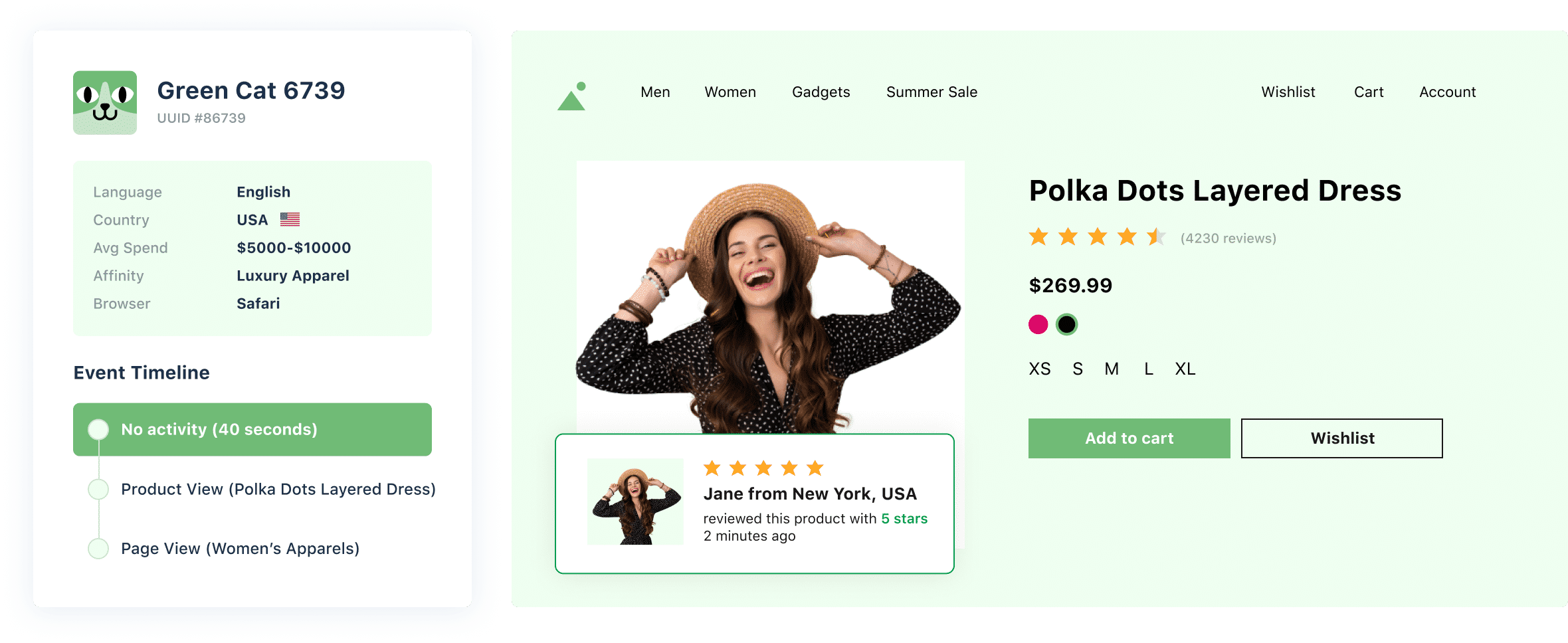
While these are some common examples of how businesses can create personalized experiences, there is no limit to what you can do. Irrespective of what your unique use case is, personalization always starts with your users’ data.
Data in personalization – All you need to know
Websites gather a vast amount of raw visitor data that has the potential to unlock valuable personalization opportunities. But to make the most out of the data you already have, knowing what type of data enables personalization is paramount.

A single view of enriched and intelligent data lets you craft experiences that convert. With digital advancement, surface-level personalization is not enough. The above data empower marketers to create behavioral micro-segments of website visitors, so they get personalized experiences at the right time in their journey. This data is collected from multiple sources and unified at one central customer data hub so that you can visualize and learn from your visitors’ behavior and leverage it in your optimization campaigns.
Let’s look at some ways you can define your audiences using raw customer data:
1. Pre-defined segments
You can build visitor cohorts using pre-defined behavioral, geographical, demographic, and contextual data in this segmentation method. You can also create micro-segments combining one or more of the above data sources.
The phone accessories online retailer mentioned earlier can use pre-defined data points (like device and browser used, location, behavior on site, past purchases, etc.) to create user cohorts, plan segment-specific campaigns, and only show them relevant content.
For example, they can segment visitors and deliver personalized content to reduce drop-offs on the customize phone covers page. Or show first purchase offers to new users to motivate them to complete the purchase. A micro-segment of iPhone 13 Pro users visiting the website for the first time and through a Chrome browser can be shown a special discount to nudge them to complete the purchase.
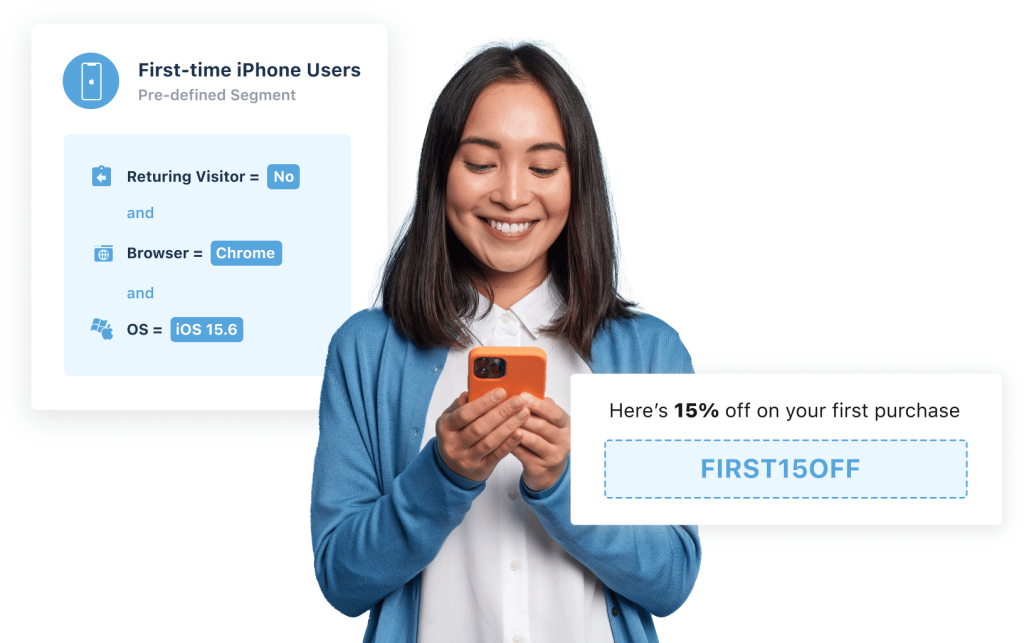
2. Custom attributes-based segments
Segmentation based on custom attributes helps deep-dive into visitor behavior and ascertain how specific segments respond to your experience. Contrary to pre-defined segments that cover generic visitor attributes, custom attributes help build cohorts using non-standard, domain-specific attributes that match your campaign goals. These are extremely flexible and allow you to create hyper-personalized interactions by filling in the gaps between pre-defined segments.
Imagine you are an eCommerce store collating and analyzing conversion rates. You notice that premium members convert at 10%, whereas general buyers convert at 2%. Using this data, you can go very specific, run targeted promotions for the general buyers to nudge them further into the funnel, and increase conversions from this segment.
Similarly, you can create custom segments based on attributes like visitors’ last visit to your website, guest visitors vs. members, monthly spends, buyer personas – discount, impulse or FOMO, frequent flyers, loyalty customers, top 5% ace gamers, and more.
3. Third-party data-based segments
Another data source that comes in handy when segmenting visitors based on external parameters is third-party tools and integrations.
For example, using Mixpanel, you can create cohorts of inactive users who haven’t used your product or app in the last week, craft re-engagement campaigns, and deliver personalized content to them for higher retention.
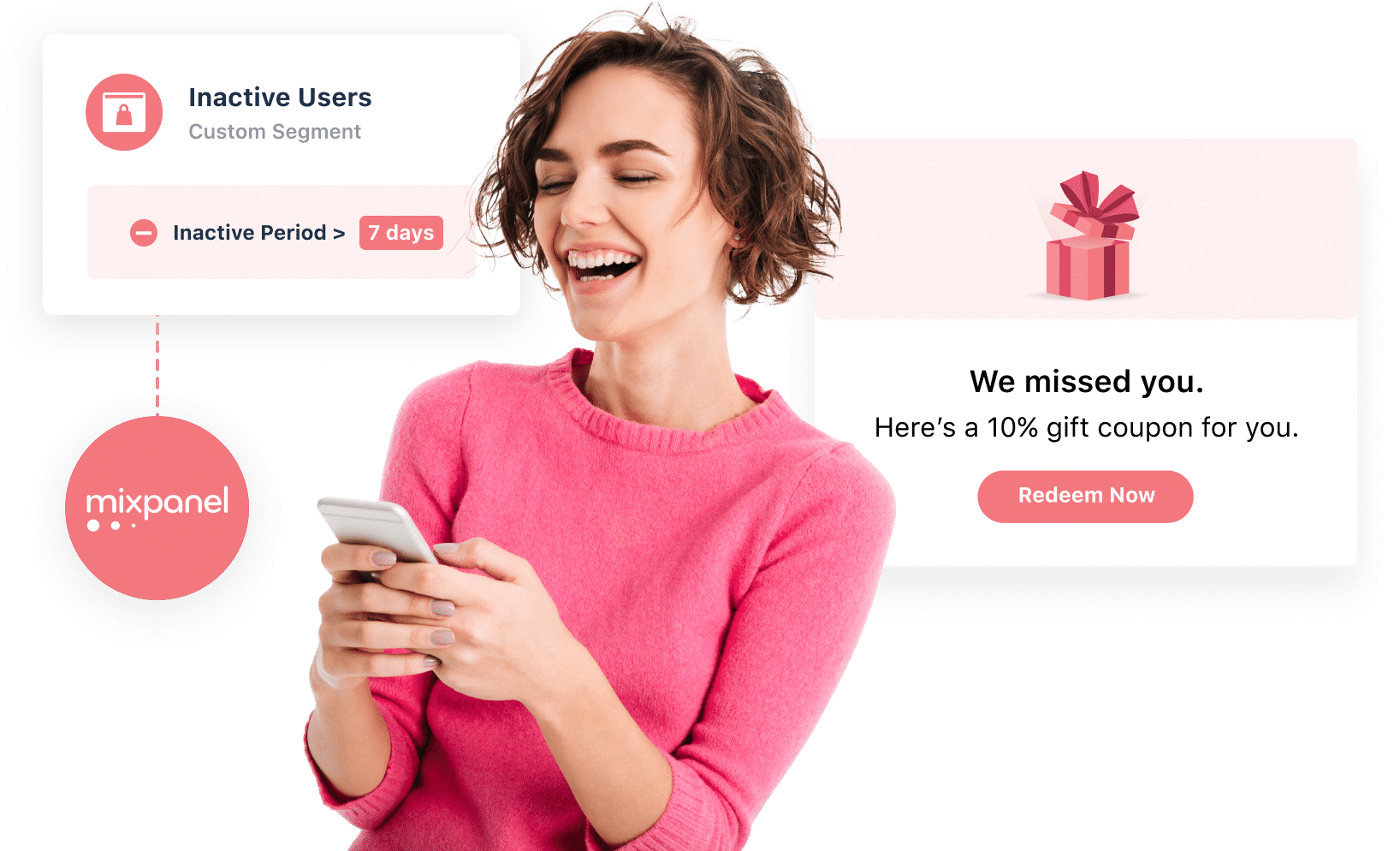
Similarly, using Clearbit’s data, like a company’s IP address, you can deliver personalized content on the homepage banner to visitors from a specific company or industry. B2B companies can leverage Demandbase to identify companies that match their defined ICP, create a segment of high intent prospects, and deliver meaningful information that helps convert companies on their very first visit to the website.
4. Uploaded visitor lists
Uploaded visitor lists consist of external data like stored cookie data, POS data, URL query parameters, premium user lists, etc., that you can import and use to create deep visitor segments. You can then run hyper-personalized marketing campaigns for these segments.
Let’s assume that you are an online gaming company. You want to target the top 10% of users of your game for a particular campaign. Working with the engineering team, you can get a list of every user that qualifies with their unique cookie value. You can deliver the desired experience using robust experimentation engines that let you upload this list onto its database.
These data sets create an invaluable collection of insights that can enrich your visitor interactions at every touchpoint. But knowing how and when to use them is critical to ensuring your campaigns’ success. Let’s look into some industry-specific use cases of personalization that help businesses create a differentiator from their competitors.
Personalization is for everyone
Whether you’re an online retailer looking to increase AOV, a SaaS firm striving to reduce churn, or a publishing house looking for more subscriptions, personalization helps businesses across industries gain deeper behavior insights and design delightful experiences that resonate with every visitor. If you are an online business looking to maximize ROI from existing traffic, build stronger visitor relationships and ultimately drive growth by delivering relevant experiences, read on to know how you can leverage personalization to activate your audience.
eCommerce
A study by McKinsay suggests that 80% of online shoppers want personalization from retailers. These potential buyers on your website that you want to convert come from varying geographies and demographics looking for various products. The same shopper may like shoes from Retailer A but not their joggers, some visitors may only shop during sales, and so on. And there is a cut-throat competition to acquire these prospective buyers. With personalization, you can dive deep into granular buyer behavior, and design tailored experiences so they choose you over your competitors.

Micro-segmentation for increased revenue
Using data like geo-location, past purchases, product affinity, etc., you can curate personalized offers and category pages, recommend products to cross-sell, upsell, and more.
For example, you can auto-apply filters on category, listing, and search pages, so visitors only see relevant products. This makes it easier for them to navigate through the products and increases sales.
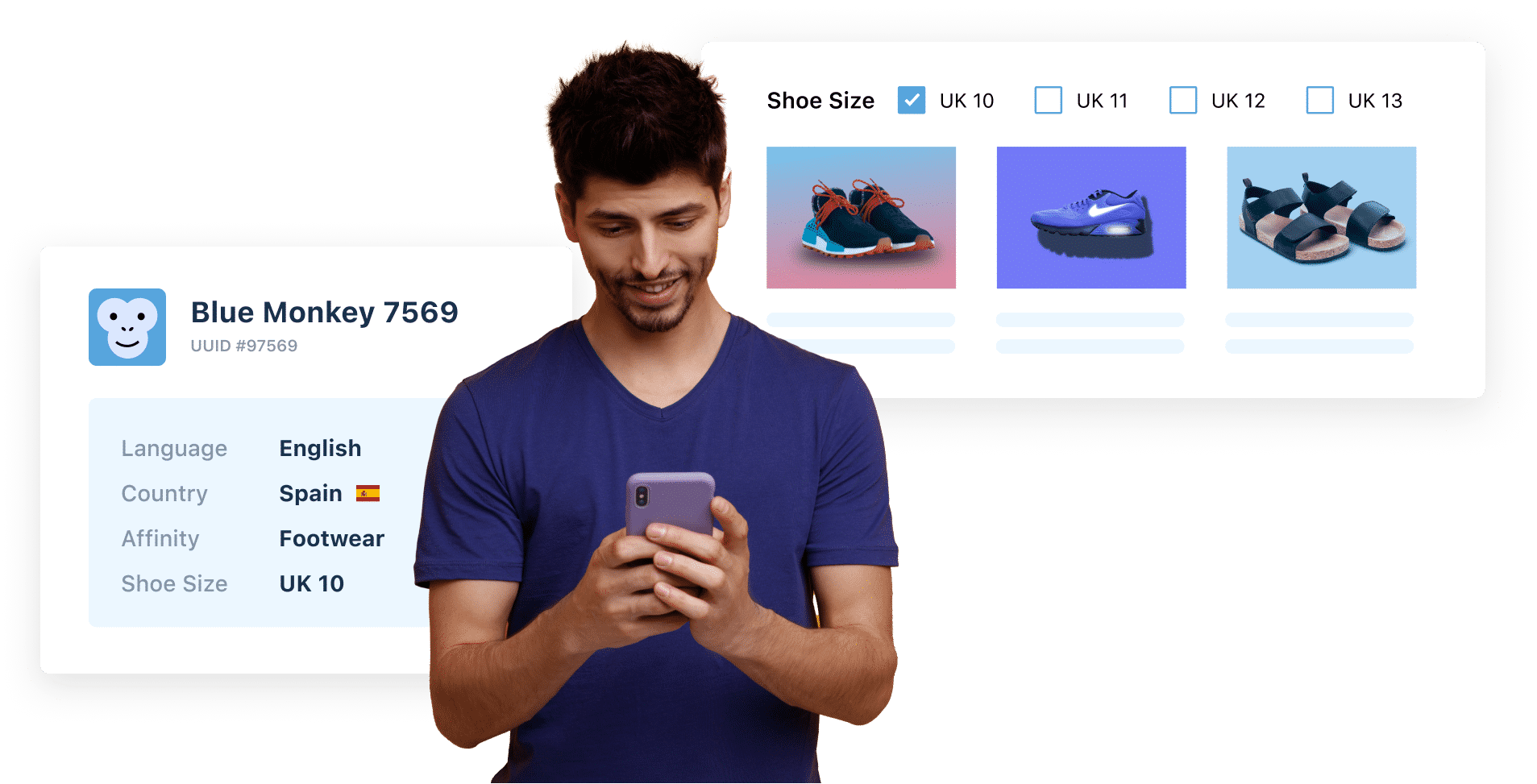
SaaS
All SaaS companies aim to keep churn at a minimum. Their subscription-based model demands building long-term relationships. Leveraging personalization to design and deliver tailored experiences for visitors rather than a general spray and pray approach shows that the company values them and helps inculcate brand loyalty.
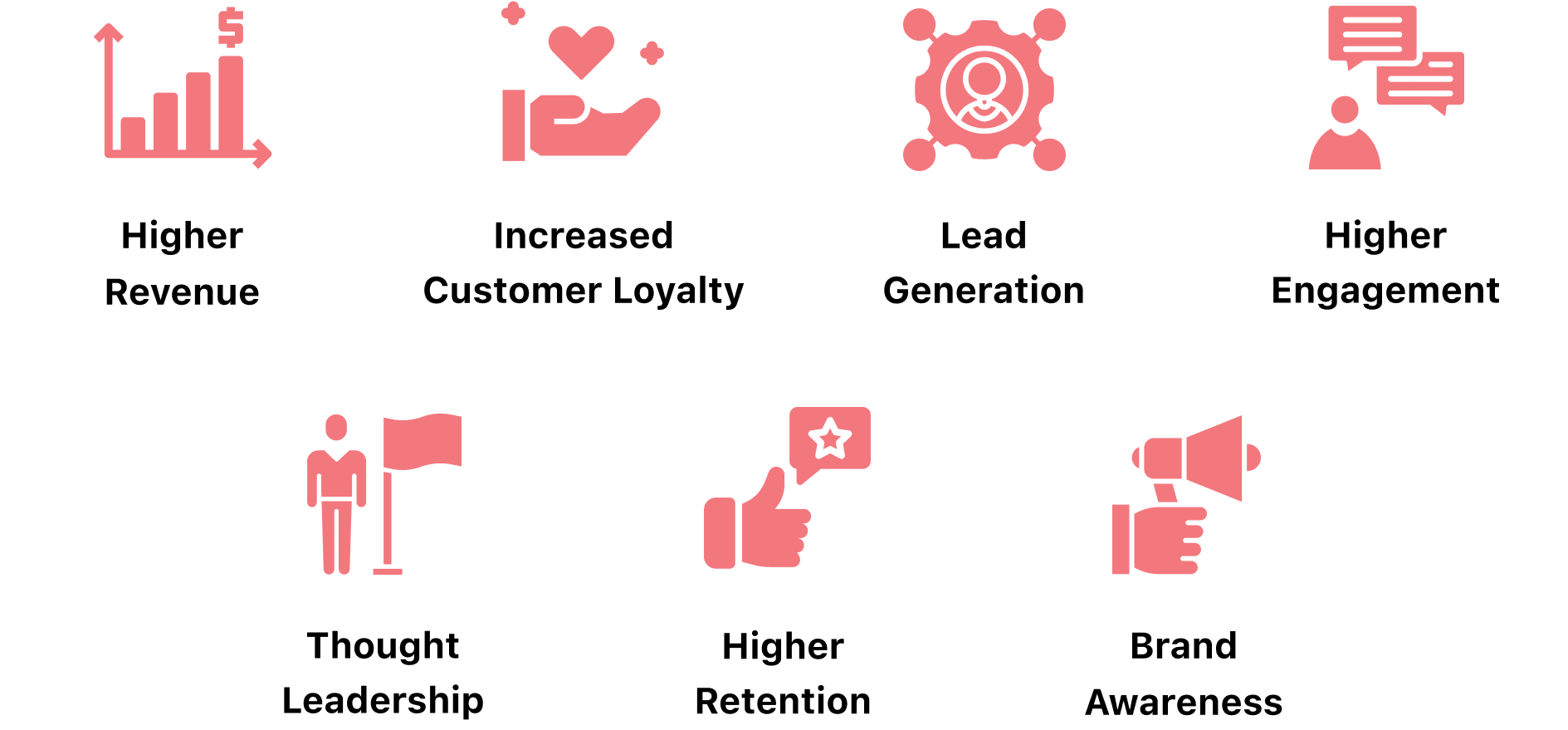
Personalized pricing and content for increased revenue
The pricing page is one of the most critical elements. You can create segments based on attributes like company size, revenue, etc., and craft experiences that match visitor expectations. For instance, you can personalize the pricing page to hide self-serve pricing and only show the “contact sales” CTA to Enterprise businesses while showing pre-set pricing to SMBs.
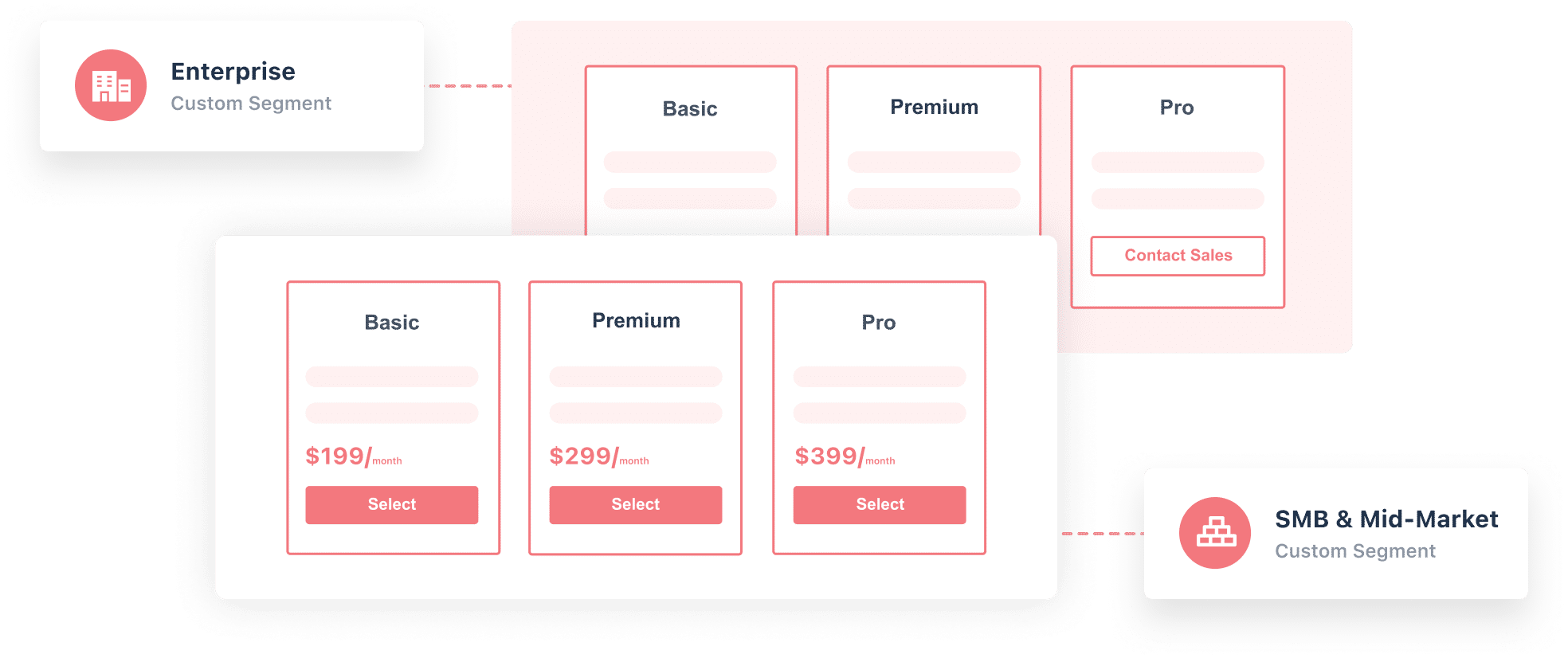
Marketers who evaluate a SaaS product conduct thorough research to find social proof. Using data from third-party tools like Clearbit, you can detect the visitors’ company/industry and trigger relevant logos, testimonials, and success stories. You can also track if the visitor has signed up for a free trial and craft the messaging so they only get content that nudges them further into the conversion funnel – from free trial to paid.
Travel
The travel industry caters to a diverse customer base. The needs and expectations of travelers keep evolving. Hence, it’s crucial to understand each visitor and curate personalized experiences.
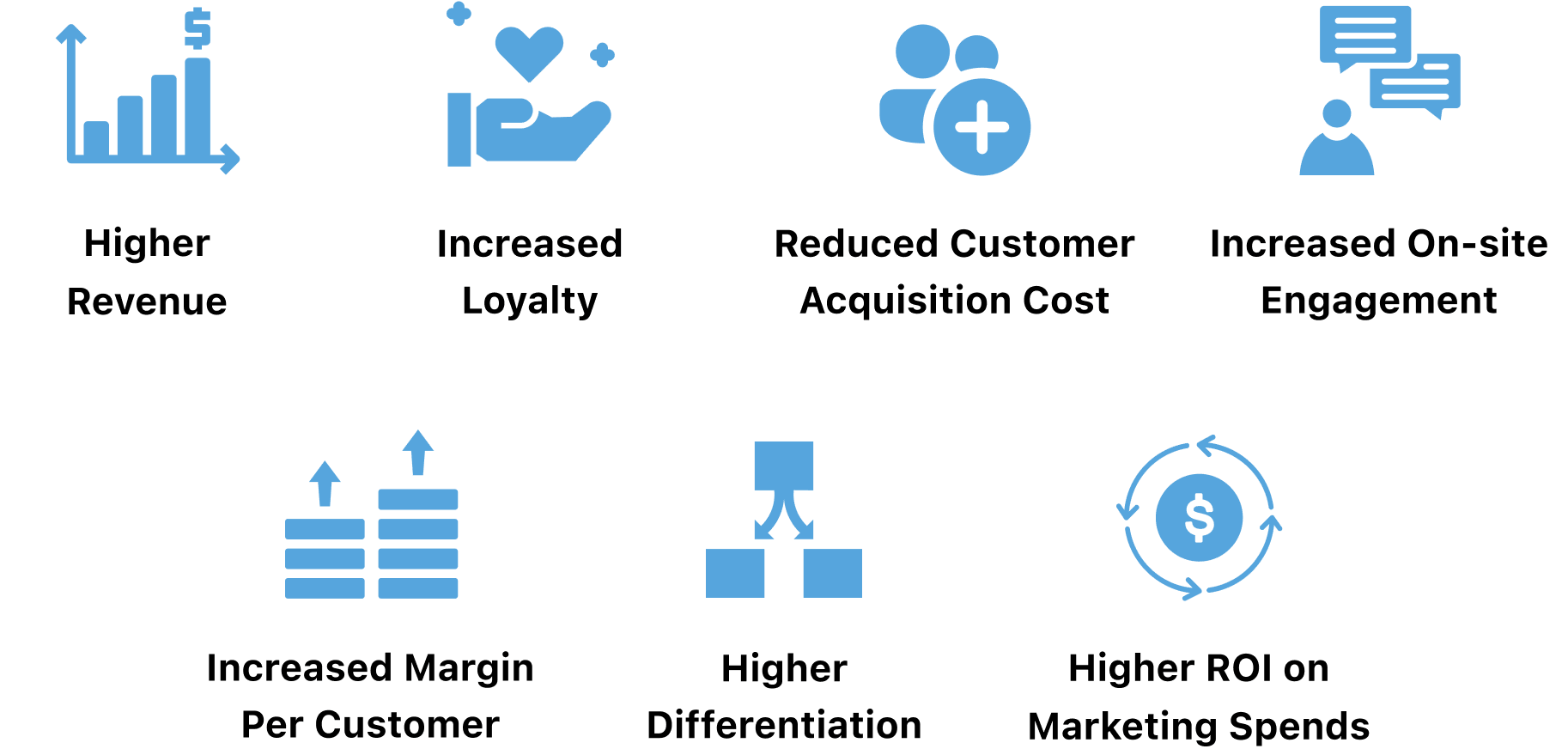
Demography & purpose-driven personalization
A majority of people travel for business or leisure. Once visitors enter travel details like date, destination, number of travelers, etc., websites can use the data to show them purpose-specific travel options & information.
For business users, show easy cancellation policies, boardroom facilities, how to get an invoice, etc. For leisure users, show activities, spa options, pool timings, 24-hour room service, discounts, etc. You can further break down the leisure demographic into more targeted groups.
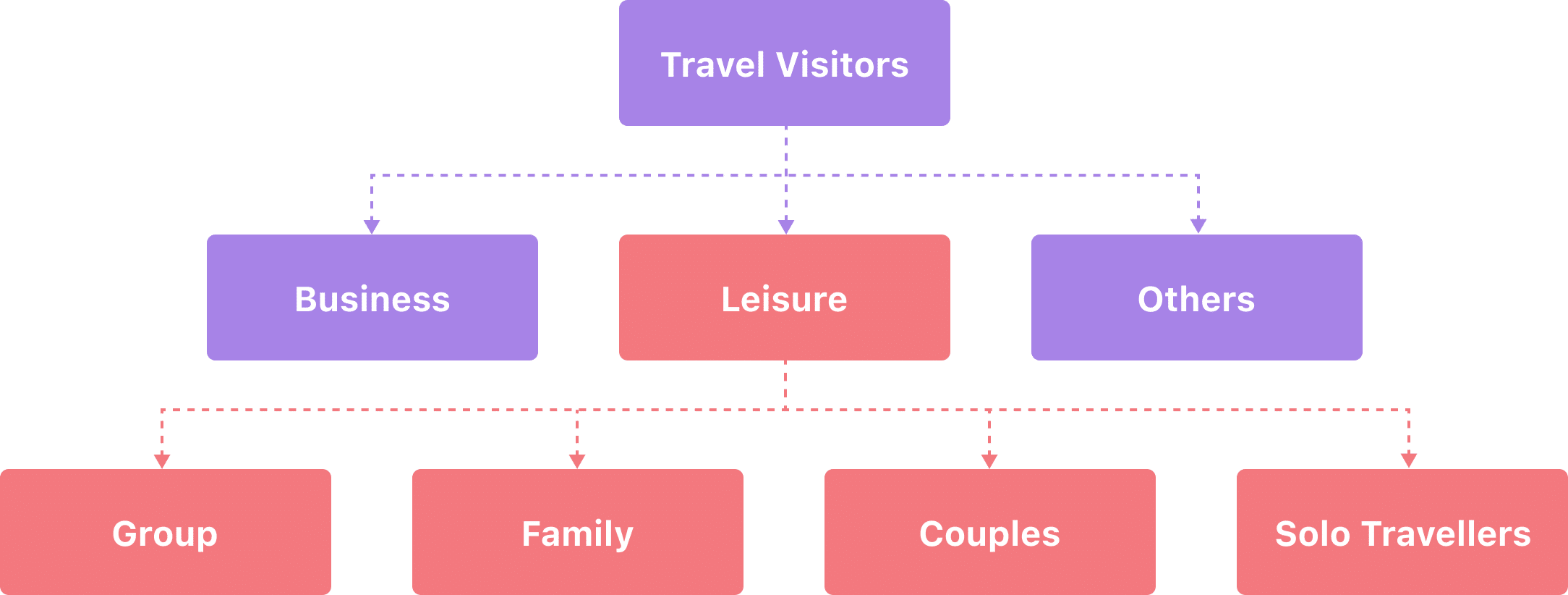
You can also pair cookie data with previous purchases, pre-select options in the booking flow, or change the ordering of search results to show the most relevant result first.
E-Learning
People respond more positively to personalized content – interacting, watching, reading more, and ultimately converting.

Personalize learning flows
Many e-learning platforms offer a multitude of courses. But, only a few of them manage to retain learners. Personalization enables e-learning platforms to break away from the linear approach where every learner follows a pre-set flow.
You can personalize learning flows with dynamic feedback and/or contextual pop-ups. For example, you can ask learners to take a quiz at the beginning of the course to assess their abilities and recommend the next steps. This creates a personalized flow for each learner that matches their skills and expectations.
You can also offer dynamic feedback that reinforces good behavior or applauds achievements. For example, once a learner completes 50% of the course at a good pace and shows progress, you can trigger personalized pop-ups encouraging them to complete the course.
Leveraging contextual data about visitors, e-learning platforms can curate personalized pathways for each learner, thus giving them more control over the course they pursue.
Media
Personalization has already revolutionized content consumption and monetization. It helped Netflix become one of the largest OTT platforms. It has brought huge revenue uplift for social media giants like Instagram and TikTok by pushing content and ads based on what users engage with most on their platforms.

Personalized recommendations for increased subscriptions
When users easily discover content they like, they continue using your platform. And when they find value in your content, subscriptions skyrocket.
For instance, an online editorial news portal can increase readership and subscription by using behavioral data to show relevant news items first. If a visitor mostly looks for sports news, it can show them sports-related content first. If a visitor often reads political updates, show similar content to get them hooked.
How to personalize with VWO?
At the start of this blog, our phone accessories retailer had actionable data but lacked the means to design and release the right experiences across every touchpoint at scale.
To bridge this gap and empower businesses to deliver hyper-personalized journeys at a scale that accelerate growth, we recently launched VWO Personalize. With this latest addition to the suite of VWO products, we aim to connect every aspect of personalization so businesses across industries can unlock infinite growth possibilities. You can create multiple tailored experiences and target each of them to a different visitor segment in one single campaign without depending on your development teams.

VWO Personalize starts with helping you build cohorts using raw visitor data. It then lets you curate and release experiences using the widget library and code editor in our powerful WYSIWYG Visual Editor:
– Create personalized experiences in a couple of clicks using our Widget Library, where you can access a range of pre-designed, ready-to-use widgets. Drag and drop any existing template and design personalized experiences quickly. In the library, you can find widgets for banners, modals, scroll to the top, countdown timer, social share, and more. You can also use dynamic texts in the content to further hyper-personalize the web page catering to individual segments.
Suppose you want to run a sale campaign on your homepage for a specific visitor segment. In that case, you can go to the Widget Library in the VWO Visual Editor, select the type of banner you want to add to the page, edit its content, and voila!
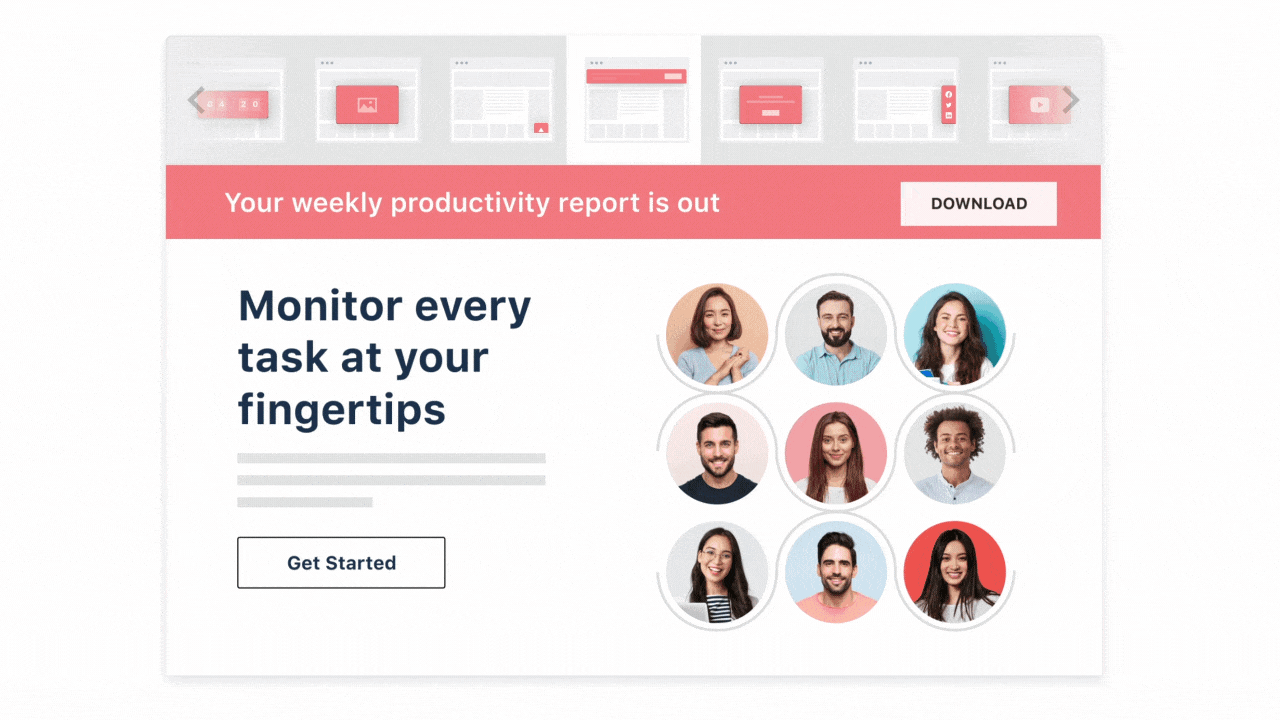
Similarly, if you are an online retailer looking to increase sales in the US region, you can add a sale countdown to specific product pages and deploy it for visitor segments you want to target. With our Widget Library, you can design as many hyper-personalized experiences for your visitor segments within minutes.
– When you want to deliver something unique, create custom templates with our Code Editor. Insert custom Javascript codes and variables into your website and build your own unique widget and experience that match your campaign goals.

Let’s say you want to add a hover effect on your product pages. Using our Code Editor, you can simply write a custom CSS or Javascript code and deploy it on the pages you’d like. Take a free trial or request a demo with our product experts to understand how VWO Personalize can help your business achieve unprecedented growth.
Personalization vs. privacy – Striking a balance
Throughout this article, we’ve discussed how visitors leave behind data trails with each online session. Companies capture this data daily to use it to personalize campaigns and interactions. But, the amount of data gathered also calls for concern about misusing visitors’ data without their knowledge. Inevitably, while visitors prefer personalized, contextual experiences, there is an inherent fear that couples it.
The question facing companies is how to use this data for personalization without breaching privacy and security. Many regulations like the European General Data Protection Regulation (GDPR) have been implemented to address this.
But companies need to take the onus of responsibility. To win visitors’ trust, they must do more than just fulfill the regulatory requirements.
Companies must ensure that their personalization practice is always compliant by adopting a privacy-first approach that ensures privacy and data safety. They must constantly update security controls with evolving data protection regulations and reforms.
Maintaining transparency about data collection, storage, usage, and what businesses do to ensure its safety is critical.
With VWO Personalize, you run data-driven campaigns and release hyper-personalized experiences while ensuring absolute data privacy. It is designed with a privacy-first approach, complies with global data protection norms, and comes with airtight controls that ensure your visitors’ privacy.
What next?
Customized covers of superior quality were the USP of our online phone accessories retailer. The irony was that most visitors were dropping off on the customized page itself. The changes made didn’t help since they were non-targeted blanket changes. Personalization fills this gap.
With personalization, our retail guy can:
- Implement auto-filtering and show customization options relevant to the visitor based on demographic data like age or gender & contextual data like phone model used
- Trigger location-specific payment options
- Trigger offers and dynamic content based on the buyer stage a visitor is on
This list is not exhaustive, and the possibilities to personalize are infinite. Visitors expect personalized experiences. If they don’t get it on your website, they will move on to the next available option. So don’t lose out on any more business. Start your personalization journey and unlock unlimited growth opportunities to scale your business now.



